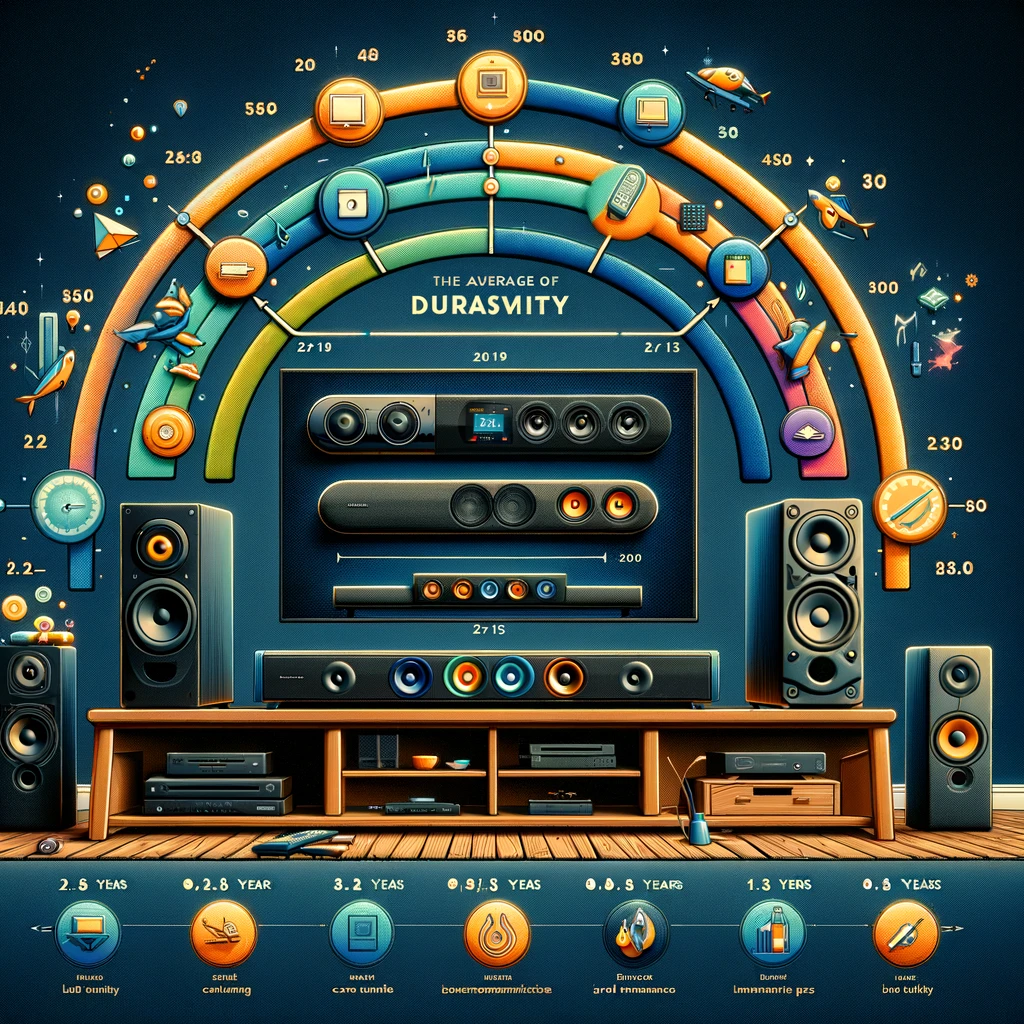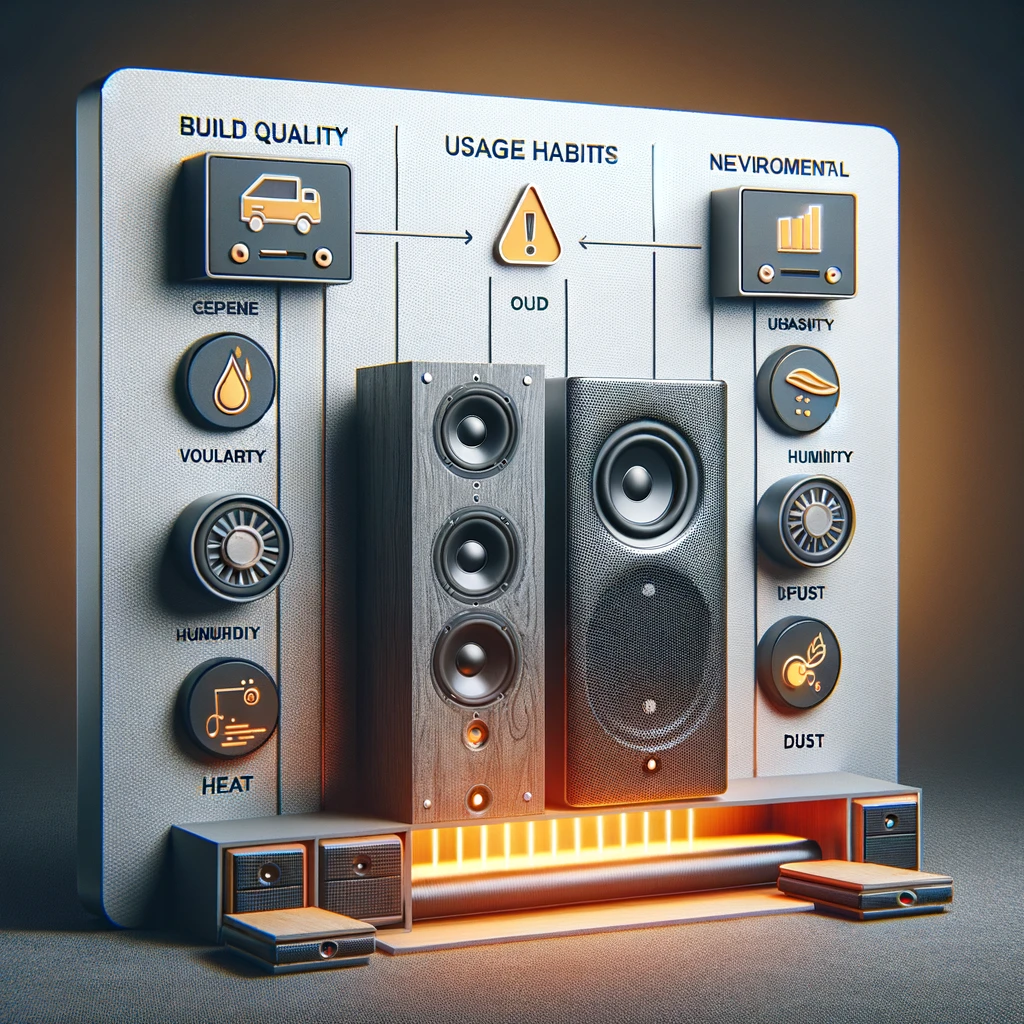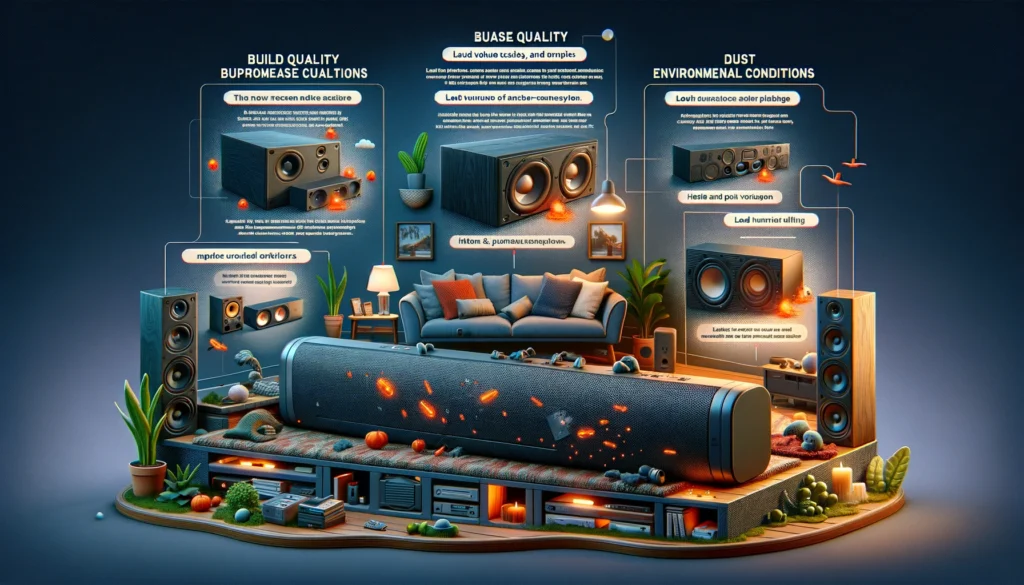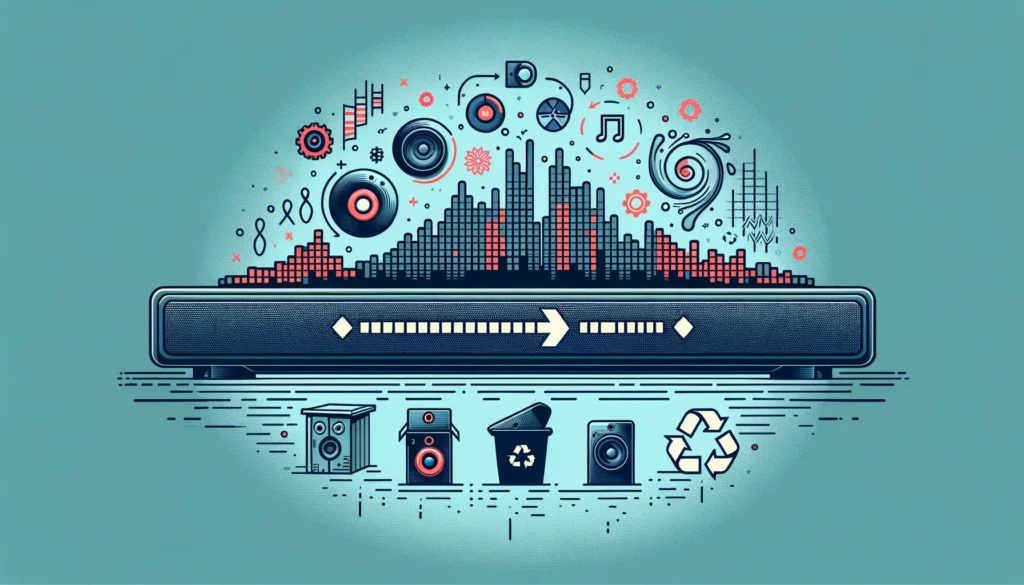With crisp amplification and dedicated speakers, soundbars offer major audio upgrades over limited TV speakers.
But how long does that audio quality last before replacement becomes necessary?
Soundbar lifespans range widely based on original build quality, usage habits, care, and environmental factors.
Typically pricier premium models last the longest at 6-8+ years, while cheaper basic models average just 2-4 years.
Let’s dive in to understand what impacts soundbar longevity and how to extend your system’s usable life to avoid premature upgrading…
How Long Do Soundbars Last on Average?

Soundbars generally last between 2 and 8 years on average depending on the original build quality and price tier.
Premium audiophile-grade models $700+ tend to last about 6-8 years or more.
Cheaper low-end models under $300 average just 2-4 years before replacement becomes preferable.
With reasonable use and care, soundbars often meet lifespan expectations.
Let’s explore more details on durability factors, lifespan by tier, care for longevity and when upgrading makes sense…
What Impacts the Lifespan of a Soundbar

There are several key factors that impact how long a soundbar will last before requiring replacement. The overall build quality and materials used in the soundbar’s construction play a major role in lifespan.
Higher-end soundbars made with premium components and housing materials, like aluminum or wood, tend to last considerably longer than cheaper plastic models.
The frequency and volume at which a soundbar is used also affects longevity. Soundbars used excessively at loud volumes will wear out faster over time due to strain on the amplifier and speakers.
Environmental factors like heat, humidity and dust accumulation also impact lifespan. Exposing soundbars to high temperatures or moisture can cause internal component failure over time.
Regular cleaning to remove dust buildup improves airflow and cooling, extending the usable life.
Typical Lifespan by Brand and Price Tiers

There are general lifespan estimates that can be expected based on the brand and pricing tier of a soundbar model. Lower-cost entry-level soundbar models typically do not last as long as more expensive high-performance models.
Entry-level Soundbars ($100-300)
For budget-priced soundbars in the $100 to $300 range, the average usable lifespan is about two to four years.
There are always exceptions based on usage habits and care, but cheaper components and plastics used on most entry-level models usually limit longevity to this timeframe.
Mid-range Soundbars ($300-700)
In the mid-range price tier of $300 to $700, improved build construction and audio components increase the typical lifespan to between four and six years on average. Some well-reviewed brand models in this range may last even longer if well maintained.
High-end/Premium Soundbars ($700+)
The highest quality and best-sounding soundbars costing over $700 often utilize the most durable materials, advanced components and power amplification.
Models in this premium tier usually last between six and eight years or more with proper care and use. The very best high-end models can perform for a decade or longer.
Extending the Life of Your Soundbar

While soundbar lifespans vary widely, there are ways to help extend the usable life regardless of tier or price range. Avoiding excessively loud volumes reduces strain and deterioration of internal amplifier and speaker components over time.
Keeping your soundbar clean and dust-free also improves lifespan.
Use at Reasonable, Non-Excessive Volumes
Playing music or movies at loudly amplified levels puts significant wear and tear on a soundbar’s working parts.
Using the system at reasonable volumes closer to normal listening levels greatly extends the lifespan of components like the amplifiers and speaker cones and diaphragms. Be especially cautious at higher volumes, which accelerate wear.
Keep Dust and Debris Clear with Occasional Cleaning
Dust buildup within a soundbar over years of use can lead to overheating issues and component failure prematurely. Using a can of compressed air to regularly blow out any visible dust helps improve airflow and cooling.
Also wipe down the exterior with a dry cloth to keep the speaker grilles clean for unobstructed sound.
Ensure Proper Ventilation and Avoid Excessive Heat/Moisture
Soundbars rely on air circulation and ventilation to prevent internal heat buildup that can damage circuits and parts over time. Avoid placing your soundbar inside tightly enclosed cabinets and maintain open space around the unit.
Also keep soundbars away from humid areas, direct sunlight or heating equipment emitting excessive warmth.
Handle Gently and Avoid Physical Impacts/Damage
Like any electronic device, rough physical handling or impacts can disrupt components or break parts entirely. When moving your soundbar, handle gently and avoid dropping, bumping or excessive force.
Use caution when cleaning to avoid pushing in speaker cones as well. Damage from shocks and trauma shorten lifespan considerably.
Consider Warranties/Replacement Parts/Repair for Faults
Manufacturer defects or age-related faults often arise outside of accidental damage scenarios. Higher-end soundbars tend to have longer original warranties, but extended plans may also be available.
Replacement parts can also sometimes be ordered to repair certain issues in out-of-warranty models. Professional repair may also be a cost-effective fix option in some situations to restore operation.
When It’s Time to Replace a Soundbar

Despite best practices to maximize longevity, there eventually comes a time when an aging soundbar’s performance declines to where replacing the unit makes sense.
Persistent Audio Issues Not Fixed by Troubleshooting
As internal soundbar components wear out, symptoms like distorted sound, cutting out entirely, electrical hum or blown speakers may occur no matter the attempts at repair.
Troubleshooting steps like cable checks, resets or firmware updates can fix some problems, but unresolvable issues usually indicate end-of-life.
Unable to Achieve Sufficient Volume Even at Max
Over years of use, the amplification circuits and power supply inside a soundbar slowly lose output capacity.
If your soundbar volume seems significantly lower than it used to be even at maximum levels, this likely indicates an amplifier/power issue signaling the soundbar should be retired and upgraded.
Damage to Speakers/Inputs/Buttons/Display
Physical damage from drops or trauma can instantly end a soundbar’s usable life. Dented speaker cones prevent proper sound emission.
Broken HDMI/input ports disable device connectivity. Cracked display panels or unresponsive buttons also make systems unfit for practical everyday entertainment needs.
Lacking Features/Connectivity of Newer Models
Beyond damage and performance decline indicating replacement necessity, technological progression also eventually makes older soundbars obsolete.
New surround encoding formats, streaming service support, voice assistants and wireless connectivity get introduced that leave aging models behind lacking key functions modern users expect. Upgrading brings back feature parity.
Repairs Becoming Frequent or No Longer Cost-Effective
If you find yourself needing to repair an aging soundbar more and more frequently just to maintain basic operation, replacement becomes the smarter route forward.
There also comes a point where the cumulative repair expenditures exceed the cost of upgrading to a brand new replacement model with Warranty protection included.
Conclusion
While lifespan varies by model, following the tips in this guide for reasonable use, careful handling, dust prevention, and considering warranty/repair options will help maximize your soundbar’s usable years.
Know the general timeframes to expect based on price tier. Overall, give your soundbar the care and maintenance it needs, then upgrade when persistent issues or lacking features indicate it’s time.
